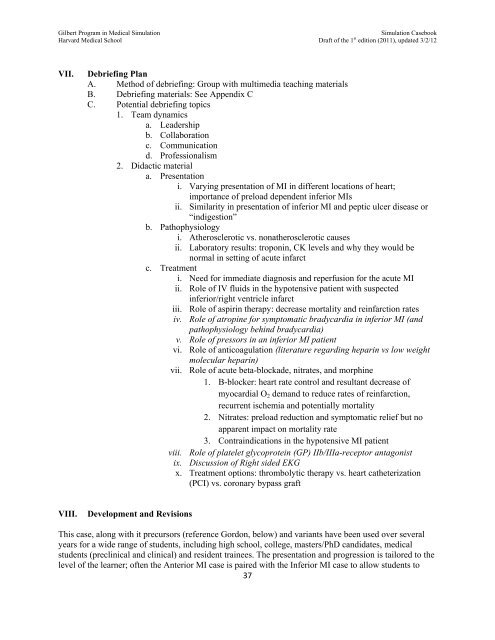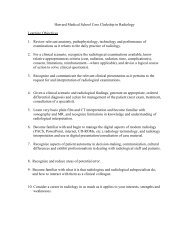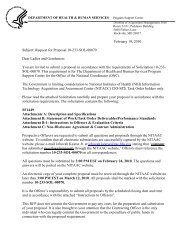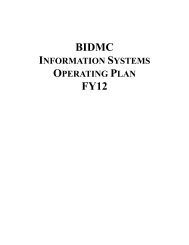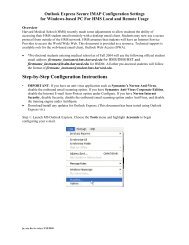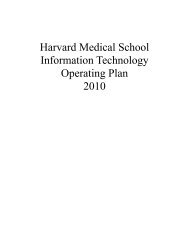SIMULATION CASEBOOK - MyCourses
SIMULATION CASEBOOK - MyCourses
SIMULATION CASEBOOK - MyCourses
Create successful ePaper yourself
Turn your PDF publications into a flip-book with our unique Google optimized e-Paper software.
Gilbert Program in Medical Simulation<br />
Simulation Casebook<br />
Harvard Medical School Draft of the 1 st edition (2011), updated 3/2/12<br />
VII.<br />
Debriefing Plan<br />
A. Method of debriefing: Group with multimedia teaching materials<br />
B. Debriefing materials: See Appendix C<br />
C. Potential debriefing topics<br />
1. Team dynamics<br />
a. Leadership<br />
b. Collaboration<br />
c. Communication<br />
d. Professionalism<br />
2. Didactic material<br />
a. Presentation<br />
i. Varying presentation of MI in different locations of heart;<br />
importance of preload dependent inferior MIs<br />
ii. Similarity in presentation of inferior MI and peptic ulcer disease or<br />
“indigestion”<br />
b. Pathophysiology<br />
i. Atherosclerotic vs. nonatherosclerotic causes<br />
ii. Laboratory results: troponin, CK levels and why they would be<br />
normal in setting of acute infarct<br />
c. Treatment<br />
i. Need for immediate diagnosis and reperfusion for the acute MI<br />
ii. Role of IV fluids in the hypotensive patient with suspected<br />
inferior/right ventricle infarct<br />
iii. Role of aspirin therapy: decrease mortality and reinfarction rates<br />
iv. Role of atropine for symptomatic bradycardia in inferior MI (and<br />
pathophysiology behind bradycardia)<br />
v. Role of pressors in an inferior MI patient<br />
vi. Role of anticoagulation (literature regarding heparin vs low weight<br />
molecular heparin)<br />
vii. Role of acute beta-blockade, nitrates, and morphine<br />
1. B-blocker: heart rate control and resultant decrease of<br />
myocardial O 2 demand to reduce rates of reinfarction,<br />
recurrent ischemia and potentially mortality<br />
2. Nitrates: preload reduction and symptomatic relief but no<br />
apparent impact on mortality rate<br />
3. Contraindications in the hypotensive MI patient<br />
viii. Role of platelet glycoprotein (GP) IIb/IIIa-receptor antagonist<br />
ix. Discussion of Right sided EKG<br />
x. Treatment options: thrombolytic therapy vs. heart catheterization<br />
(PCI) vs. coronary bypass graft<br />
VIII.<br />
Development and Revisions<br />
This case, along with it precursors (reference Gordon, below) and variants have been used over several<br />
years for a wide range of students, including high school, college, masters/PhD candidates, medical<br />
students (preclinical and clinical) and resident trainees. The presentation and progression is tailored to the<br />
level of the learner; often the Anterior MI case is paired with the Inferior MI case to allow students to<br />
37


